River days in the Bolivian Amazon wetlands
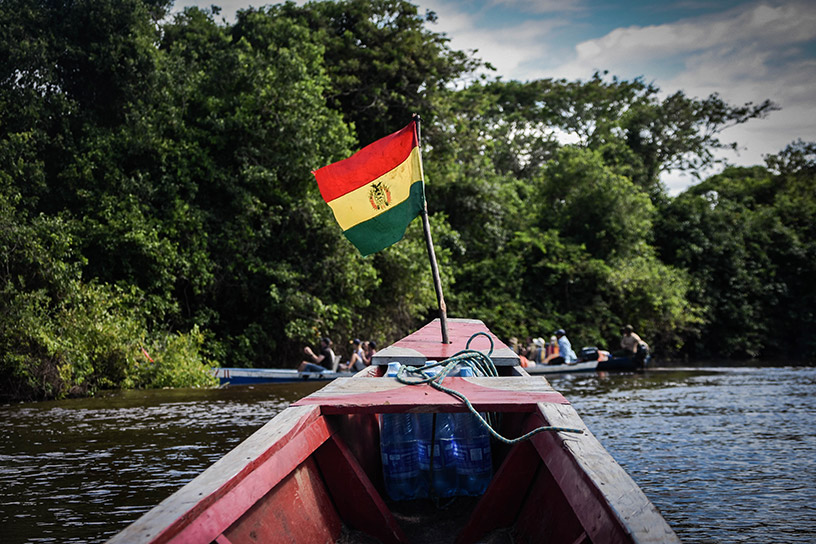
Did you know that the Amazon Jungle can be visited from Bolivia? Bolivia is one of the cheapest countries to visit the Amazon region from – and if you’re after adventure, you can definitely find it here.
The gateway to the Bolivian Amazon region is the small town of Rurrenabaque. You can reach the town by a bus journey from La Paz or take a 30-minute flight on Amaszonas airlines, also from La Paz. Not keen on an arduous bus ride, I took the less taxing journey of a quick flight to start my Amazonian adventure.
Once in Rurrenabaque, you have two options to visit the Amazon. You can go visit the jungle side or the pampas (wetland savannah) side. Both offer different experiences and if you have the time and money, you can even do both.
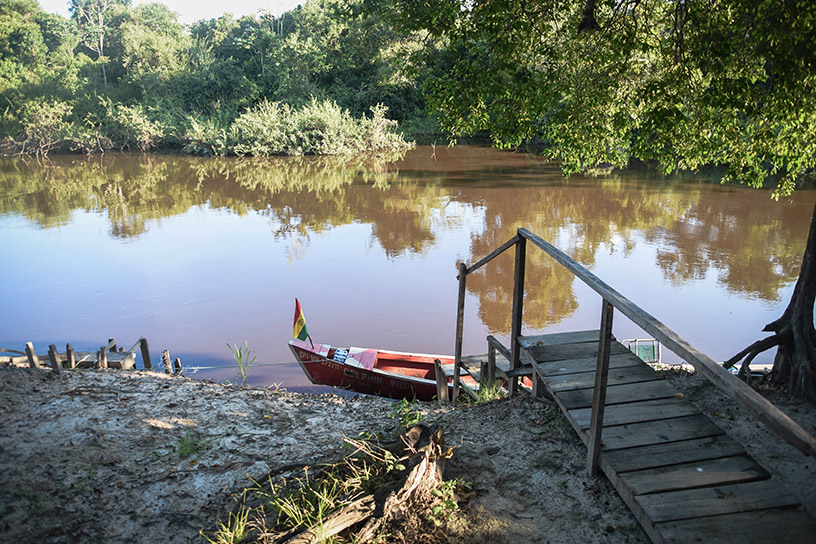
The jungle tour is predominantly a cultural experience, and you’ll visit indigenous villages and learn things like the medicinal value of plants.
The pampas tour is more focused on wildlife spotting. Wanting to get my wildlife fix, I opted for the pampas tour – as did most of the other backpackers I met while in Rurrenabaque.
To visit the pampas, there’s two critical elements you need. Strong insect repellent and light coloured, loose fitting clothing. The mosquitoes are unrelenting in these parts and you’ll need to be well prepared. The Amazonian mosquitoes will bite through thin clothing (even if you have insect repellent on). I learnt this the hard way!
Here’s a gear list to get you started:
- Insect repellent (aim for at least 50% DEET)
- Light coloured long sleeved shirts, preferably of a tight woven material – avoid cotton if you can
- Long pants, something like cargo pants are best
- Sunscreen
- Broad brimmed hat
- Dry bag for any valuables
- Raincoat
- Raincover for your backpack
- Anti-itch spray or gel for any insect bites
- Medication such as Imodium just in case
- Roll of toilet paper
- Camera
- Malaria tablets
Once you’re geared up, then it’s time to start the adventure. My trip into the Bolivian Amazon started with a two-hour 4WD drive to the town of Santa Rosa - the jumping off point to the River Yacuma in the Amazon River basin.
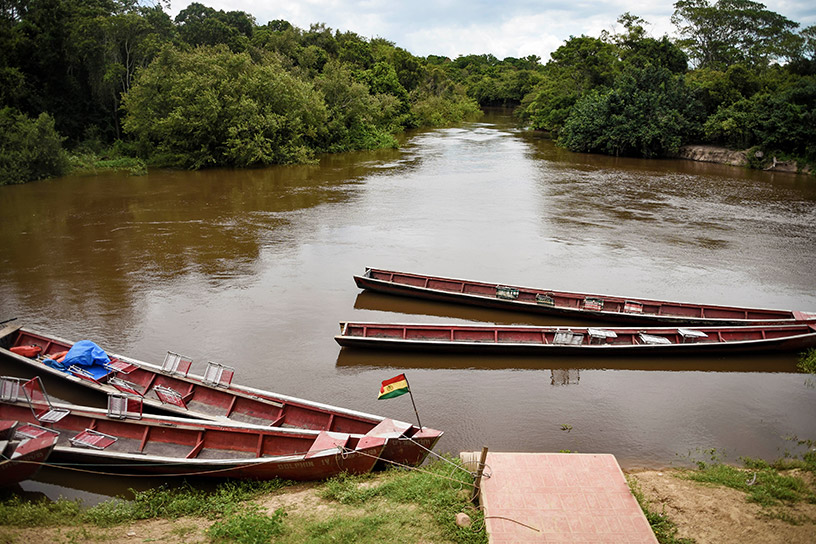
From the riverside, my travel buddy and I hopped on board a long, wooden motorised river boat. And then we were off for a three-hour wildlife spotting adventure while we made my way to the pampas river lodge for the next two days.
Cheeky squirrel monkeys, capybara (nicknamed the Amazonian guinea pig), caiman (similar to crocodiles) and a variety of birds were among the animals spotted along the river banks on the journey.
The guide was only too happy to stop to allow us to get a closer look and take photos, and provide details about the animals we spotted.
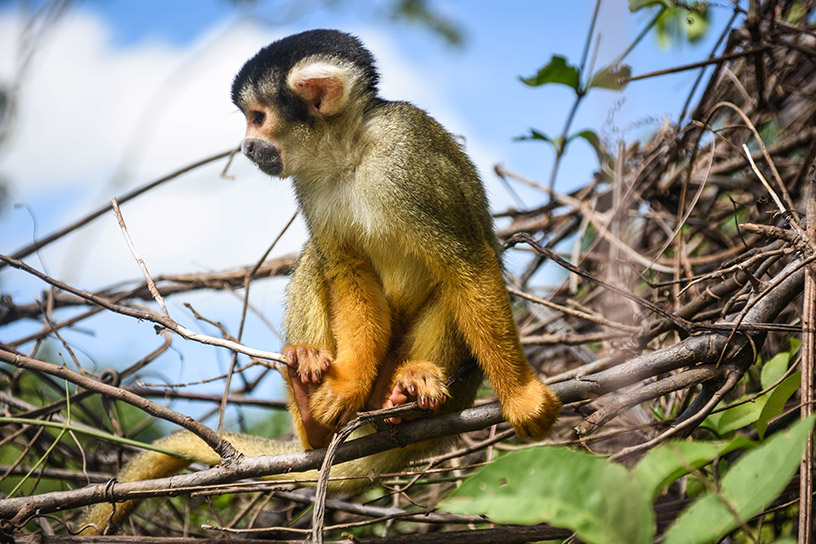
Once settled into the rustic river lodge, it was time to head out and watch the sunset over the pampas swamplands. After the sun went down, we were off to go do some caiman spotting along the river banks.
My boat sailed along as we scanned the riverbanks with our torches, looking for the tell-tale orange eyes of the caiman illuminated by our headlamp. We spotted about half a dozen caiman resting on the riverbanks.
The second day of the tour started with a couple of hours of anaconda spotting. My group headed into the wetlands to see if we could find an anaconda.
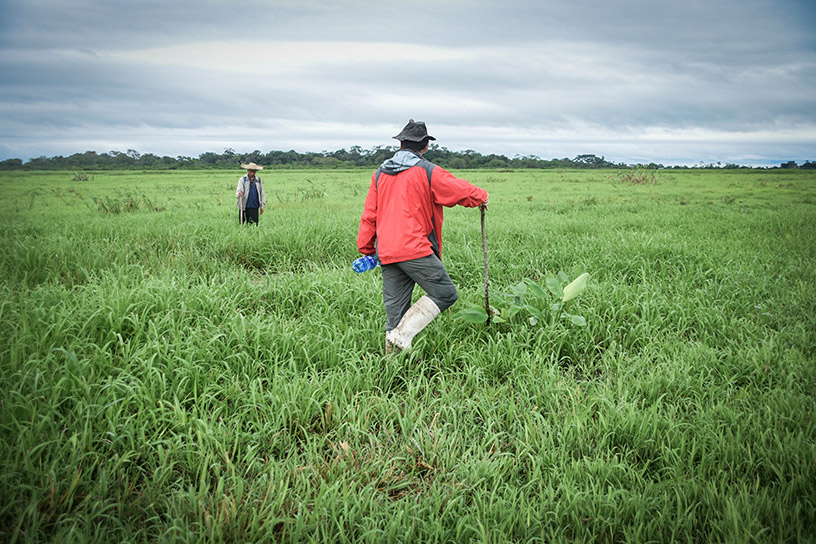
Anacondas dwell near water and are often sighted sunning themselves on flat patches of grass. But owing to the rain that morning we only spotted a baby anaconda. We had better luck fishing for piranhas – which we then had for dinner that night.
The final day of the tour was meant to start with sunrise but rain put a dampener on our plans, so after a sleep in, the group headed out to go looking for pink dolphins. My guide knew a couple of places that the dolphins frequent and we weren’t disappointed – seeing half a dozen pink dolphins swimming and catching fish.
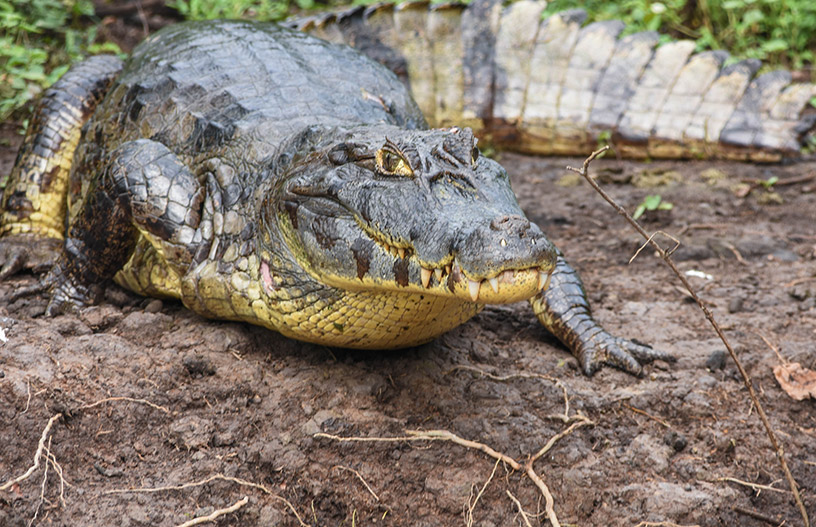
After an early lunch, we headed back to Santa Rosa – continuing to spot animals along the way including several species of birds, turtles, caymins and capybara.
Bolivia’s Amazon pampas is a unique experience for adventurous travellers that offers a chance to see animals you probably haven’t seen before. Just be prepared for the mosquitoes!
Things You Should Know:
- Jungle or pampas tours can be booked directly in Rurrenabaque or through tour agencies in La Paz.
- Each Rurrenabaque tour agency has their own lodge alongside the Yacuma River. No matter what company you choose, the itinerary is the same, however the quality of lodging, guide and food will differ.
- The pampas lodges are basic. There is no hot water and electricity is only on for about two hours a night (usually between 7pm and 9pm). My lodge had a charging station in the dining room to charge phones and cameras when the power was on. Each bed also had a mosquito net.
- Pampas tours are set at a minimum of 1200 Bolivianos by the Bolivian Government. If you pay less, the quality of your tour may be questionable and bad experiences are rife. Do your research before committing to a tour operator.
- You’ll need an additional 150 Bolivianos in addition to the tour price for entry into the Santa Rose Municipal Park which provides access to the Yacuma River.
- If you don’t speak Spanish, make sure you are guaranteed an English speaking guide through your tour agency.
- All tours include your meals once you leave Rurrenabaque, as well as mineral water.
- Be prepared for an onslaught of mosquitoes on the pampas tour, particularly if you head there around the rainy season (November to March). The Amazonian mosquitoes will stop at nothing to get to you, including clothes. You will want to cover up as much as possible – even wear two layers if your bottom layer is thin to prevent mosquito bites. Insect repellent is not enough.
- Most tours depart Rurrenabaque around 9am and return around 4pm on the third day so allow for a day either side to spend in Rurrenabaque.
- Rurrenabaque is very backpacker friendly with a couple of hostels, bars, and restaurants suiting Western tastes. You can also pick up items such as insect repellent and hats in the town.
Lisa Owen is a pint-sized Australian following her dreams to travel to as many places as she can, and loves to share her photography, travel hacks, hiking adventures, and food discoveries along the way. At last count, she has travelled to more than 60 countries in between working in public relations and discovering hidden gems in Australia's great outdoors. Instagram: @thelittleadventurer. Facebook: The Little Adventurer Australia.
The views, opinions and positions expressed by the author and those providing comments are theirs alone, and are meant as travel inspiration only. They do not reflect the opinions of Cover-More Insurance. You should always read the Policy Documents available from your travel insurance provider to understand the limits, exclusions and conditions of your policy and to ensure any activities you undertake are covered by your policy.